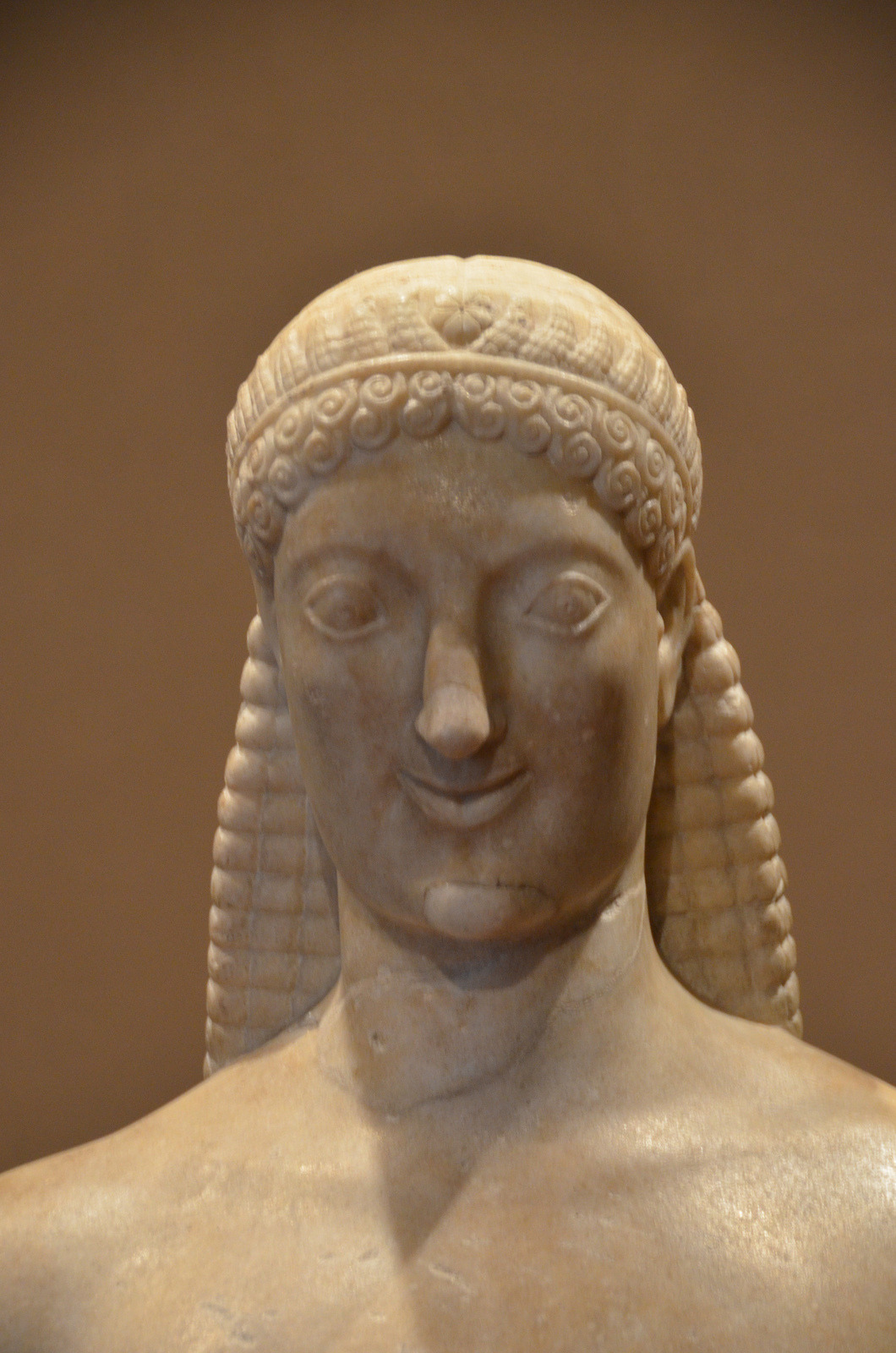Classical Greek and Roman sculpture is known for its beauty and true to life detail. These sculptures were inspiration for the masters of the renaissance, and for an entire style of art and architecture in the 1700s. However, Greek sculpture wasn't always Venus de Milo and Laocoon and his Sons, early Greek sculpture and art was vastly different, and a little...unsettling.
The archaic period of ancient Greece is the time previous to the fourth century BCE. This was the period of time in which Greece was still figuring out how to Greece. They were working out the kinks of democracy, experimenting with black figure pottery, and hosting their first Olympics. The archaic period is when a lot of the things that characterize our modern idea of Ancient Greece sprung into being.
It was from here that the archaic smile sprung. The archaic smile is a tiny smirk seen on most statues from the period. It's the sort of smile that someone might give as a joke now, preferably with a double or triple chin, but it wasn't a joke in Ancient Greece.
There are several theories surrounding the reason for this creepy little smile. The most pervasive are:
Given that we cannot ask any Archaic Greek artists about the meaning behind their art, it is difficult to say which of these theories are correct. However, no matter the meaning behind, the archaic smile distinguishes any piece of artwork from the era, making Archaic Era art instantly recognizable.
Sources
"The Archaic Smile: A Commentary on the Arts in Times of Crisis" by Francis Henry Taylor
Archaic Smile-Britannica
Archaic Smile in Ancient Greek Sculpture: Definition and Concept
Greek Archaic Period
 |
| A prime example of the Archaic Smile |
It was from here that the archaic smile sprung. The archaic smile is a tiny smirk seen on most statues from the period. It's the sort of smile that someone might give as a joke now, preferably with a double or triple chin, but it wasn't a joke in Ancient Greece.
There are several theories surrounding the reason for this creepy little smile. The most pervasive are:
- This small smile was used to indicate that the subject was in good health, and was happy.
- Carving a full smile was simply too difficult. (Which, honestly, is fair.)
- Greek art of the time was about idealizing and showing perfect bodies. This smile was simply the ideal and perfect smile. The Greeks wanted their sculpted bodies to be in perfect balance and harmony, this smile brought balance to the face.
Given that we cannot ask any Archaic Greek artists about the meaning behind their art, it is difficult to say which of these theories are correct. However, no matter the meaning behind, the archaic smile distinguishes any piece of artwork from the era, making Archaic Era art instantly recognizable.
"The Archaic Smile: A Commentary on the Arts in Times of Crisis" by Francis Henry Taylor
Archaic Smile-Britannica
Archaic Smile in Ancient Greek Sculpture: Definition and Concept
Greek Archaic Period

I understood that if viewed from below the smile changes and looks natural whereas if viewed straight on it looks like a smirk
ReplyDelete